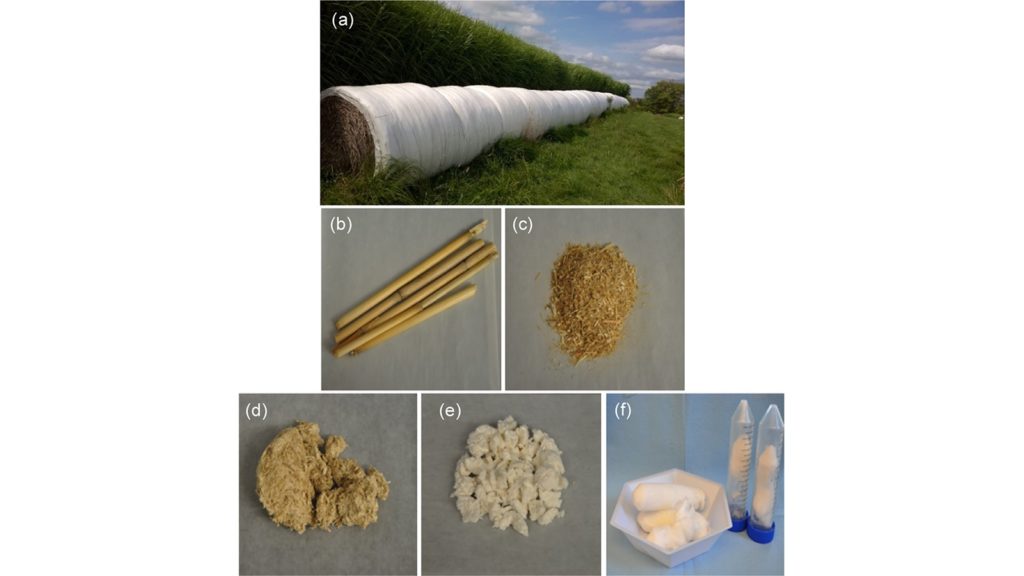The R&D 100 Award, announced on Oct. 29, 2019, opened the door to strengthening collaboration on future projects between UChicago and Argonne’s Materials Engineering Research Facility (MERF).
“It shows what can be done when the two organizations work closely together.” — Stuart Rowan, UChicago and Argonne researcher
“It is very exciting to have this joint work between the University of Chicago and Argonne honored in this way,” said Stuart Rowan, UChicago’s principal investigator on the project who also holds at staff position at Argonne. “It shows what can be done when the two organizations work closely together.”
Argonne and UChicago developed a “manufacturing process for extracting high-quality cellulose nanocrystals from biomass.” The research team included Erik Dahl, a chemical engineer in Argonne’s Applied Materials Division (AMD); Kris Pupek, an organic chemist and group leader of the Process R&D and Scale-Up Group in AMD; Greg Krumdick, AMD director; and Rowan. Matthew Tirrell, dean of the Pritzker School of Molecular Engineering at UChicago, supported the research.
Cellulose nanocrystals (CNCs) come from renewable resources and have many promising applications in materials synthesis, green catalysis, biosensing and more. CNCs can be used as a replacement for carbon fibers in composites, for energy storage and conversion, water purification, and many other applications.
However, the high cost of producing CNCs at a large scale, and the relatively poor quality of the product, impede commercial development. Argonne, UChicago and Aloterra Energy LLC then worked together to solve both problems.
Rowan started this research while at Case Western Reserve University in Cleveland and brought it with him when he was hired at UChicago. UChicago researchers discovered a way to extract CNCs from Miscanthus x. Giganteus, a fast-growing grass, and the extracted CNCs exhibited desirable properties. However, the initial process developed at the bench lab scale was not suitable for large-scale production.
With this limitation in mind, in January 2017, Tirrell brought together a group of researchers from UChicago and Argonne’s MERF. Rowan described to the Argonne team the work the UChicago team had done to extract and purify CNCs from the grass, which can grow as tall as 12 feet in just two seasons. The Argonne researchers believed they could help scale up the process.
“I got excited right away when I heard about the project,” Krumdick said. “This was our first bio process to scale. I realized it wouldn’t be easy, but I also knew my team had the skills to tackle this type of challenge.”
Building on the work of the UChicago team, Argonne scientists invented an optimized process and scaled it up to an economical manufacturing level. The process, known as Bio2Nano, converts noninvasive, abundant Miscanthus x. Giganteus into high-quality CNCs. By combining in-situ generation of a bleaching agent, bleaching, and hydrolysis into a single step, the novel process reduces materials and energy usage as well as waste generation.
After UChicago earned a patent for its initial process, Argonne filed for a patent for its improved process. The researchers are seeking additional funding to help build the pilot systems, said Krumdick.
One of the biggest pulls for Rowan moving to UChicago was Argonne and the fact that molecular engineering is a joint venture between the two institutions.
“This was the first collaboration I had with anyone at Argonne, and the whole MERF team, Greg, Kris and Erik, were just fantastic to work with,” Rowan said. “As we further develop the technology in my lab at UChicago, I look forward to future collaborations with them and others at Argonne.”
Research at the MERF is funded, in part, by several offices within DOE’s Office of Energy Efficiency and Renewable Energy, including the Vehicle Technologies Office, the Building Technologies Office, the Bioenergy Technologies Office and the Fuel Cell Technologies Office.
The Office of Energy Efficiency and Renewable Energy supports early-stage research and development of energy efficiency and renewable energy technologies to strengthen U.S. economic growth, energy security, and environmental quality.
Argonne National Laboratory seeks solutions to pressing national problems in science and technology. The nation’s first national laboratory, Argonne conducts leading-edge basic and applied scientific research in virtually every scientific discipline. Argonne researchers work closely with researchers from hundreds of companies, universities, and federal, state and municipal agencies to help them solve their specific problems, advance America’s scientific leadership and prepare the nation for a better future. With employees from more than 60 nations, Argonne is managed by UChicago Argonne, LLC for the U.S. Department of Energy’s Office of Science.
The U.S. Department of Energy’s Office of Science is the single largest supporter of basic research in the physical sciences in the United States and is working to address some of the most pressing challenges of our time. For more information, visit https://energy.gov/science.
Original post https://alertarticles.info



